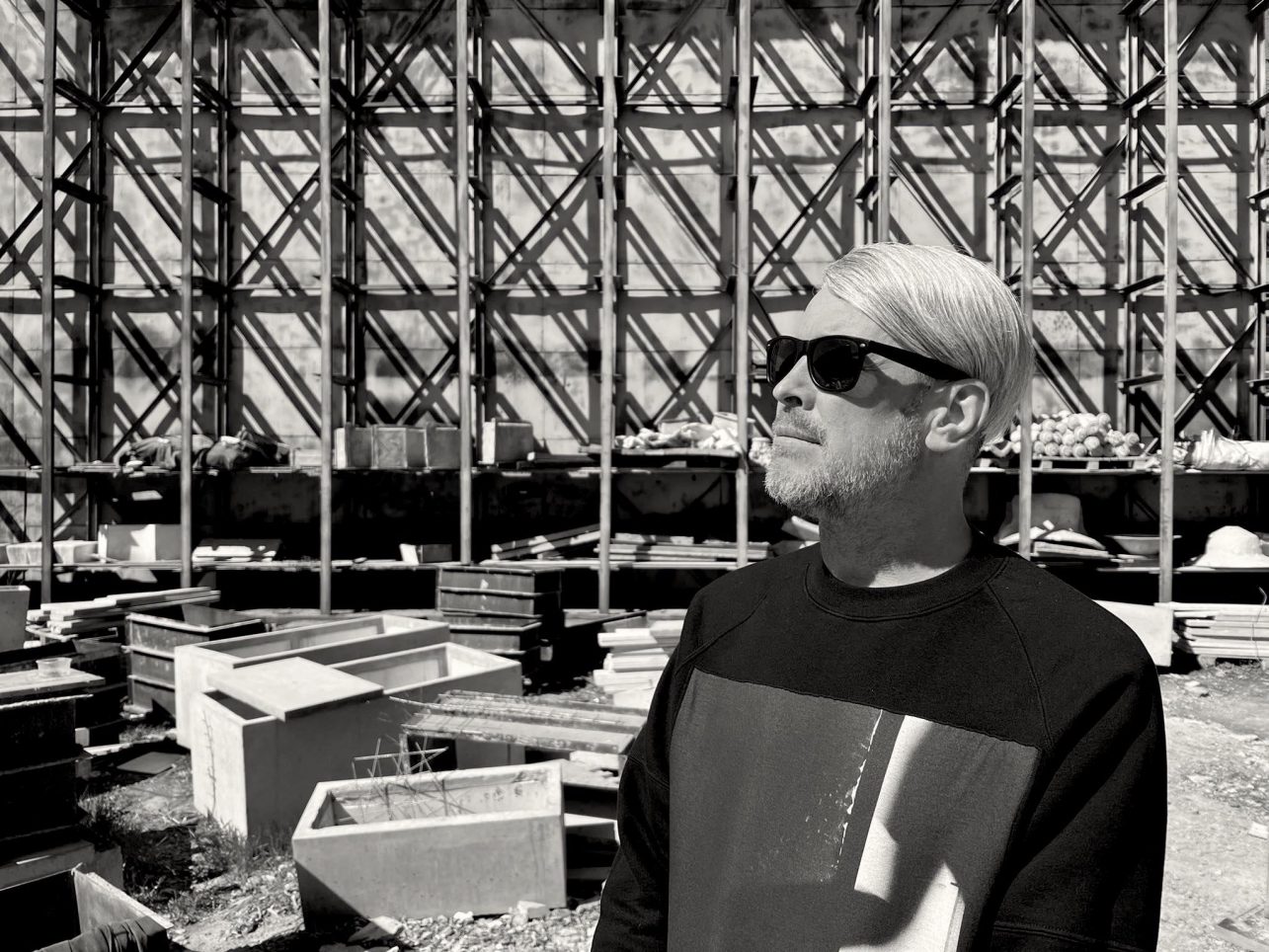Optimismo, the electronic and experimental music festival taking place from 3-5 June, reveals its location. The event will take place in the historic metal factory in the Karmelitai Quarter, where more than a dozen composers and DJs from all over the world will perform as part of the program of Kaunas – European Capital of Culture 2022.
A place with a multi-layered history
“There are hardly any authentic places like this left – we don’t even dare to use modern set design for a contemporary event here, but rather more ephemeral solutions that emphasise the fertile industrial space rather than overload it,” comments Eugenijus Sabaliauskas, walking around the factory, which today houses a kart racing circuit.

Sabaliauskas is a lighting director who has worked with many theatre celebrities and who boldly uses his talent and experience in the genre of electronic music events. “I would say that in the Optimismo project, I spontaneously became the architect of visual solutions, influenced by the inertia of the event idea – together with Kaunas sculptor Andrius Pukis, we explore the layers of history that are present here, and we interpret them for the sound of the 21st century.”
A neighbourhood in the centre of Kaunas, which began to snowball in the 19th century, is today surrounded by business establishments, new residential buildings and multi-layered history. Businesses were rapidly established here, close to the railway, in the times of Tsarist Russia. Later, in inter-war Kaunas, the quarter became home to iconic modernist complexes such as Pienocentras and Kauno Audiniai.
Historical urban growth as inspiration for contemporary processes
The street that today bears the name Kaunakiemio was once called Malaya Gospitalnaya (Little Hospital), a term suggesting that during the Tsarist rule, there were no Carmelites left in the area., The quarter was named after the monks who had moved there in the 18th century. In the 1840s, a military hospital was set up in the former monastery, and a few decades later, metal factories began to spring up nearby. It is said that the Karmelitai, together with Šančiai, turned Kaunas into one of the most crucial metalworking centres in the west of the Russian Empire.
The Optimismo festival takes as its inspiration the spirit and ambition of the city’s creators in the early 20th century – between the wars, Kaunas grew sevenfold. The architectural historian Marija Drėmaitė calls Kaunas modernism the architecture of optimism. This phrase has proved to be the most appropriate for the festival, which invites one to discover the light in the blend of the arts once again in the twilight.
at dawn, the cool morning light, coming through the time-affected glass blocks, will give the event a purely ritualistic effect.
Just like the architects of modernist architecture, who were characterised by political, social, economic and cultural optimism, contemporary music makers dare to experiment with technology and stand out for their virtuosity, unconventional structure of their works and new creative methods. However, no progress comes without sacrifice – and sacrifice is evident in the urban face of the city. One example of this is the once small wooden houses that have been replaced by abandoned factories, which will eventually turn into luxury apartments.
The light grid as a construction element
“I am particularly interested in the relationship between the precision of architectural ideas and the effects of nature and time on the metal factory – I believe that corrosion can be functional when it comes to aesthetics,” Sabaliauskas continues his tour of the metal factory. He and Pukis will use products from the adjacent concrete factory for the visual solutions of the electronic music festival – not specially commissioned but already existing. According to the authors, the monumentality of concrete can become an extremely flexible material from a contemporary perspective.
Although the spaces of the former factory are fragmented by time, Optimismo will bring them and the architecture together into a unified sensation through outdoor installations, the highlighting of authentic elements, and the juxtaposition of artefacts and contemporary structural elements.


This is outdoors, while inside, the lines of the glass blocks framing the factory’s shelter will help to follow – or lose – the sense of time as the electronic music artists change one after the other. “More precisely, two sources of light that become tools for changing the state and the space: after dark, the rhythmic repetition of the glass blocks will become stained glass windows that emphasise the perspective of the space, and at dawn, the cool morning light, coming through the time-affected glass blocks, will give the event a purely ritualistic effect.”
“The new virtual spaces, which will only be born for the festival period, will also be modelled with the help of sound rhythm loops and a transparent retina, usually used in drawings to perceive the scale,” says Sabaliauskas.
Artists from Kenya to the Netherlands
Optimismo, which looks back to the city’s industrial past, is part of Kaunas – European Capital of Culture 2022 Modernism for the Future programme. The festival is curated by the creative teams of Digital Tsunami and Ghia. Among the artists already confirmed to come to the former metal factory are Animistic Beliefs (Netherlands), Corin (Australia/Indonesia), Slikback (Kenya), Osheyack (China), Bambounou (France), Nazar (Angola/Belgium), and many others.

